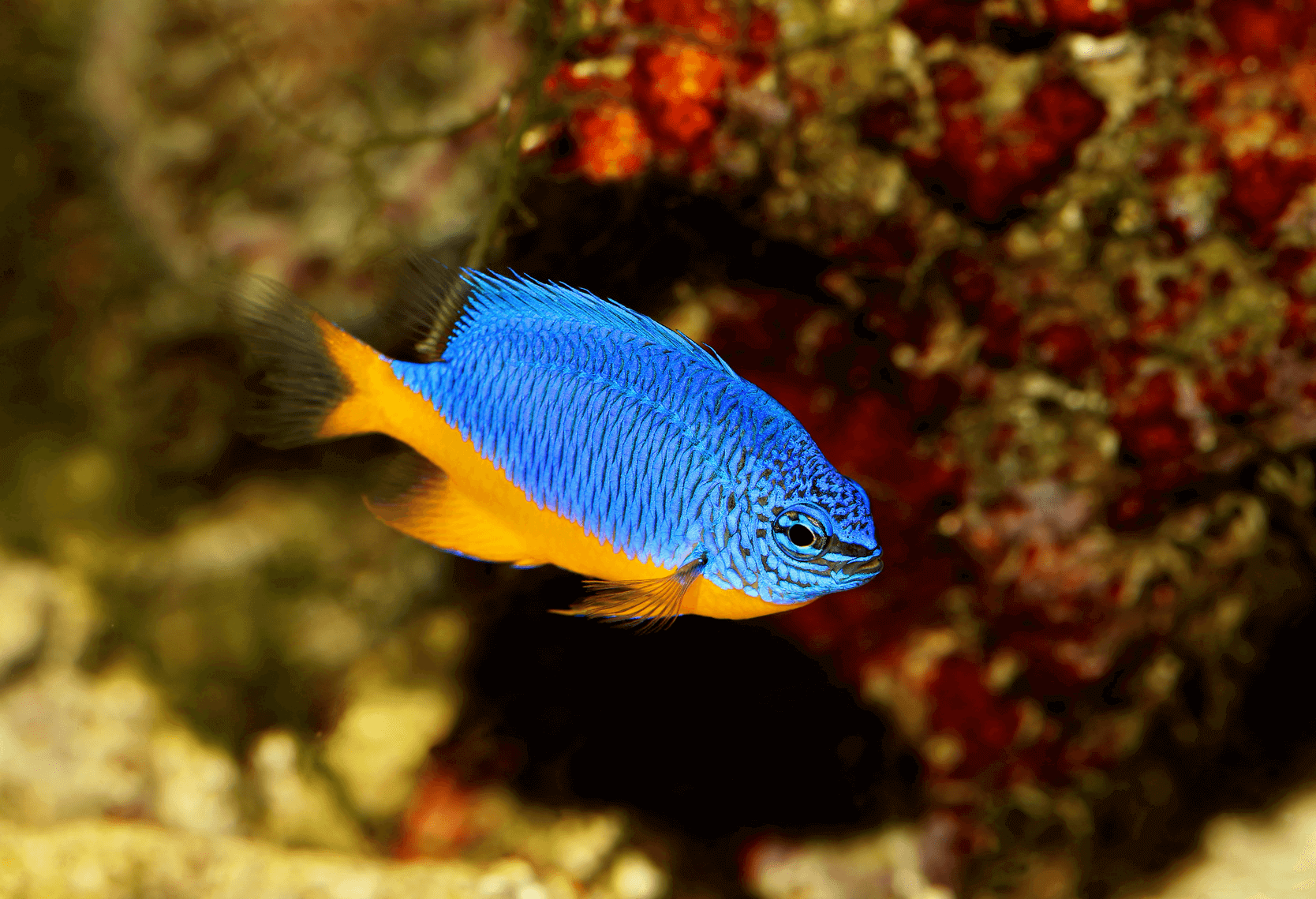
The damselfish are tropical marine fishes, of which there are about 250 different species in the world. These fishes of the family Pormacentridae are exotic in nature and are distinguished from others mainly by their attractive and striking colors and by the fact that they are very active.
Damselfish are mainly found on the reefs of the Atlantic, Indian and Pacific Oceans. There are species that also live in freshwater rivers, although most live in saltwater. Because of their colorful appeal, they have become a favorite among aquarists.
Types of Damselfish
There are a wide variety of species and types of damselfish. Below we present the most common and well-known ones.
- Blue damselfish. This is probably the most popular aquarium fish. It is bright light blue in color, with a bright yellow snout and tail in males, and measures just 6 centimeters.
- The Jewel damselfish. Black in color with bright blue spots, it is an ominovorous fish that is a bit aggressive, which is why, in most cases, it must remain alone in the aquarium.
- The neon damselfish. It is characterized by its bright neon blue, green or yellowish coloration. However, it only shows this coloring when it is happy and safe.
- Black and white damselfish. A zebra colored fish, it reaches a length of 8 centimeters and has three vertical black stripes, which makes it very attractive.
- Green damselfish. Its size varies between 6 and 8 centimeters and its coloration is light green with some bluish touches. It is native to the Indian and Pacific oceans.
- Sergeant damselfish. An omnivorous fish that lives in the Atlantic Ocean and the Caribbean Sea. Although its colors are very attractive when it is young, it loses this coloration as it ages.
- Garibaldi damselfish. Bright orange in color, it lives in the subtropical part of the Pacific Ocean. It can reach 15 centimeters in length, which makes it the largest of the damselfish.
Basic Damselfish Care
Damselfish are a great option for those new to the world of aquariums. As you would expect, they are very hardy fish, so they are not a tricky species. The only problem with them is that they are generally quite aggressive fish, with the exception of the blue damsel.
The Food of Damselfish
Damsels are omnivorous fish, so they will eat just about anything. Flake foods, live and frozen foods, brine shrimp, fish eggs, squid, shrimp, crustaceans and any other small marine organisms can be part of their daily diet.
It is best to give them small portions several times a day so that they can consume large quantities from time to time. However, there are also species of herbivorous damselfish that can be fed dry flake food and green food.
Aquarium Maintenance for Damselfish
The small size of damselfish will allow you to keep them comfortably in a medium to large aquarium. The water temperature should be between 22.7 and 27.2 degrees Celsius. The pH should be between 8.1 and 8.4. An abrupt change in this concept can seriously affect the health of your fish.
It is very important to change at least 20% of the water in the aquarium every 2 weeks, but this will depend on the number of fish you have. If you only have one fish, you can change 20% of the water once a month. Always make sure that your damselfish have enough room to swim and that there are caves, rocks and other hiding places in their path.
Coexistence of Damselfish with Other Species
In general, it is more than advisable to keep damselfish alone in the aquarium. Most species of damselfish have an aggressive and very territorial behavior. With other damselfish, they can behave quite well when they are very young or living in a very large aquarium.
However, with other species, you must be able to provide them with shelter. In this regard, you should try to introduce all the fish at the same time so that they become acclimated to the group. Otherwise, if you introduce another fish later, the damsel fish will feel that you want to invade its territory.
Damselfish, in short, are very hardy and ideal fish to have in an aquarium. They are very attractive and striking and are capable of eating anything. However, they tend to be a bit aggressive, so you should pay attention to their behavior with the rest of the species and know their characteristics to see if they can live together. What’s your favorite type of fish so far? Let us know in the comments below.







